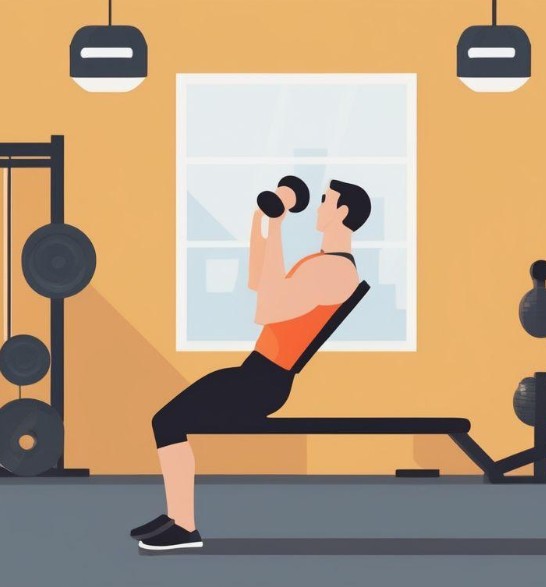What Every Athlete Should Know About Avoiding Training Injuries
What Every Athlete Should Know About Avoiding Training Injuries
Training injuries can be a significant setback for athletes, jeopardizing their performance and well-being. Whether you’re a seasoned professional or a weekend warrior, understanding how to prevent these injuries is important. Athletic training can be rigorous, which makes every athlete susceptible to strains, sprains, and other injuries.
Empowering athletes with knowledge about injury prevention is important, as it arms them against potential setbacks.
This blog explores critical strategies and insights that every athlete should incorporate into their training routines to minimize the risk of injuries.
Common Types of Training Injuries
Recognizing the most common types of training injuries is the first step in prevention. Sprains, strains, tendinitis, and stress fractures are prevalent among athletes. Sprains typically occur when ligaments are stretched or torn, often affecting ankles or knees. Strains involve muscle or tendon injuries and can happen in various body parts, especially during sudden movements.
Tendinitis is inflammation of the tendon and often arises due to repetitive strain from sports activities. Stress fractures are tiny cracks in bones that develop due to consistent overuse.

Understanding these injuries allows athletes to identify symptoms early and take appropriate measures to address them before they worsen. Establishing a solid knowledge base about injury types can enhance awareness during training and gameplay.
Importance of Proper Warm-Up and Cool-Down
Warm-up and cool-down routines are forms of preparation and crucial components of any training regimen. Engaging in dynamic stretching and mobility exercises before training increases blood flow to muscles and enhances flexibility, which are important in reducing injury risk during workouts. Warming up prepares your body for the physical demands ahead by gradually increasing your heart rate and loosening up muscles, ligaments, and joints.
Cooling down assists the body in gradually returning to its resting state, helping to reduce muscle soreness and promote recovery. Athletes should always allocate time for these important routines in their training schedules. Neglecting them often leads to an increased likelihood of injuries. Consistency in warming up and cooling down plays a pivotal role in long-term athletic health.
Investing in Proper Equipment
The right equipment is important for performance enhancement and injury prevention. This includes suitable footwear, protective gear, and any sport-specific accessories necessary for optimal training. Footwear should provide the necessary support, cushioning, and fit, significantly affecting an athlete’s biomechanics. Utilizing sport-specific gear, such as knee pads or helmets, can provide further protection during high-impact activities.
Athletes risk incurring injuries if they use inadequate equipment or disregard their gear’s condition. Regularly inspecting and replacing worn-out equipment ensures that athletes maintain peak performance levels while minimizing injury risks. Choosing quality equipment is a long-term investment in both an athlete’s performance and health.
Listening to Your Body
One of the most crucial practices for injury prevention is learning to listen to your body.
Recognizing signs of fatigue, discomfort, or pain is important for making informed decisions about training intensity and volume. Many athletes tend to push through pain, believing it to be a necessary part of their journey.
Ignoring such signals can lead to severe injuries that might take months to recover from.
Athletes should educate themselves about how to distinguish between normal discomfort from exertion and pain that signals a potential injury. Adopting a mindset that prioritizes health and safety can help athletes extend their careers and improve performance. A peaceful relationship with one’s body often fosters greater resilience in the long run.
Consulting Professionals for Guidance
Consulting coaching professionals and physical therapists can provide invaluable insights into training practices tailored to individual needs. Coaches can advise athletes on proper techniques, conditioning regimens, and recovery strategies that align with their specific sport. A physical therapist can assist in creating a personalized injury prevention program, focusing on strengthening vulnerable areas.
These professionals can evaluate biomechanics, helping to identify any muscle imbalances that could lead to injuries. Should an injury occur, seeking guidance from a personal injury law firm may be important for understanding legal rights should the injury be due to negligence on the part of trainers or facilities. Proper professional engagement contributes significantly to a holistic approach to athlete wellness and injury prevention.
Emphasizing Cross-Training
Cross-training incorporates a variety of exercises across different sports and activities, offering numerous benefits for injury prevention.
It helps in developing diverse muscle groups, reducing the risk of overuse injuries by varying the strains placed on the body. Engaging in alternative workouts such as swimming, cycling, or yoga enhances athletic performance, boosts conditioning, and improves flexibility.
Implementing cross-training into regular routines allows athletes to take a break from the repetitive motions specific to their sport, enabling muscle recovery while maintaining fitness levels.
This strategic approach to training is an effective way to ensure longevity in an athlete’s career while optimizing performance.
Athletes who equip themselves with knowledge about injury prevention can vastly improve their performance and extend their careers. From understanding the common types of injuries to the importance of consulting professionals, each strategy plays a crucial role in keeping athletes safe. Fostering safe training environments and listening to one’s body can make all the difference. Continuous education and implementing best practices will protect athletes against setbacks, ensuring that they can train effectively and reach their goals.

